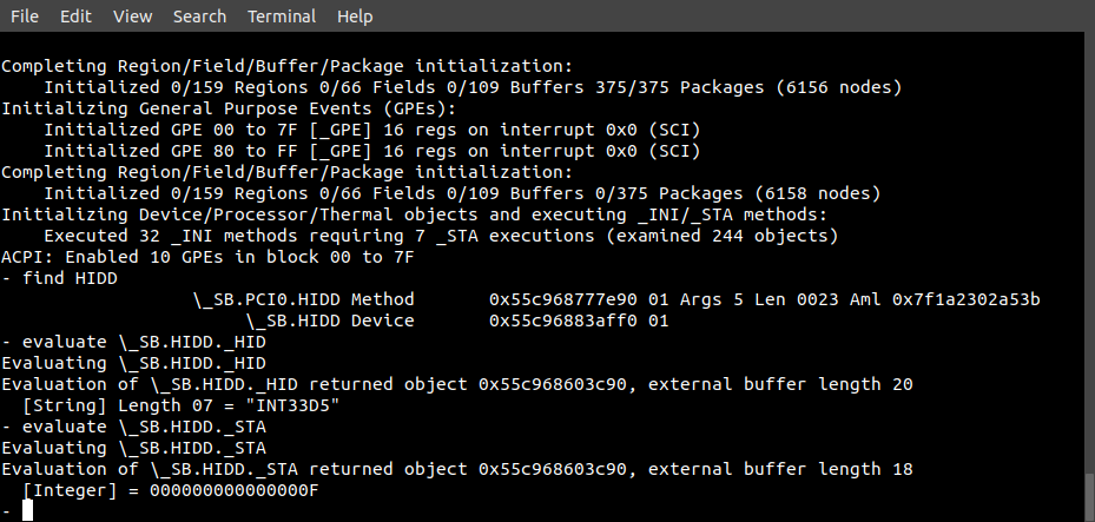
- Dsdt windows extract windows how to#
- Dsdt windows extract windows install#
- Dsdt windows extract windows update#
- Dsdt windows extract windows Patch#
- Dsdt windows extract windows windows 10#
have to change the battery, but for now everything seems ok. To extract all files run expand against the cab file. correction, I was able to boot with this DSDT, the problem that I was having was being that this system of mine is very old the CMOS battery is drained and my settings keep resetting. macOS: Launch mand from either a terminal window or by double clicking the file. Instructions: Linux: Launch SSDTTime.py with any somewhat recent version of Python from either a terminal window or by running the file normally.
Dsdt windows extract windows update#
The msu files contains usually 4 files: WSUSSCAN.cab, the cab files with update files and a txt and xml files which describes the update. Additionally on Linux and Windows the tool can be used to dump the system DSDT. You could also write conditional DSDT changes, which will only be applied when booting MacOS ('Darwin'). In the left pane, expand the Icon group and navigate to the. In the app, go to the File > Open menu, or press Ctrl + O to browse for the file you want to extract an icon from (I will open c:windowsexplorer.exe).
Dsdt windows extract windows install#
If this is not what you want, you can install rEFInd, which will not manipulate the ACPI, DSDT settings etc., when booting Windows. To Extract Icon from EXE or DLL File in Windows 10, Download Resource Hacker. The directory must exist.ĭ:\temp> expand -F:* windows10.0-kb4056892-圆4_.msu windows10.0-kb4056892-圆4 When booting Windows via OpenCore, it provides Windows the illusion, that it is installed on a Mac. Parameter -F defines the files to extract, the second parameter is the msu file and the third the directory to extract the files to. Usage is simple if you want to extract all files. The key helps to activate the Windows version without any input from users.
Dsdt windows extract windows windows 10#
So one can find and retrieve Windows 10 or Windows 8 key using Linux.

Thinkpad, Dell, and many other BIOS vendors expose these keys to Linux, too, along with tons of data.
Dsdt windows extract windows Patch#
I think in order to modify the fan speed I need to patch the DSDT, and that's why I want to decipher the above.Windows builtin utility for extracting cab or msu files is expand Most modern desktop and laptop comes with Windows 8 or 10 keys embedded in BIOS. It's possible to lower the fan speed, yet keep the CPU temperature the same. if it is like my previous HP nc8430 laptop, the fan speed is set unnecessarily high. It runs too loud even when the CPU is idle, and. What I really am trying to do is get the fan to relax on an HP G60-244dx laptop. It does not appear that there's a table like that in this ASL file, so I think there must be some program logic doing the mapping. This will create an unedited copy of your motherboard's DSDT. Open DSDT Editor, and go to File-'Extract DSDT' from the menu bar. In some DSDT, the mapping between temp and fan speed is in a neat little table, and modifying the mapping is just a matter of changing a few numbers. In some ways, patching your own DSDT is more convenient than using a pre-edited DSDT from tonymacx86 unlike pre-edited DSDTs, patches will work with any of your motherboard. What I'm trying to do is modify the laptop fan speed that gets used for various temperatures. It could be dedicated solely to passive temp control. So I'm not sure this section controls the fan at all. Where Fans are considered "Active" temperature control, an example of "Passive" temp control would be turning the voltage or speed down on a CPU. Beyond that I am just guessing based on guesses.Įdit: upon further review, _PSL is Passive List (according to the ACPI Spec), which returns a list of Passive Temperature control devices. I think C2K is a convert-to-Kelvin function. Based on that I'm guessing that FSTL in the above is Fan-Set-Level or something similar, and FMAX and FMIN are Fan-Max-Speed and -Min-Speed, respectively.
Dsdt windows extract windows how to#
So I'm figuring that snip of the DSDT has something to do with manipulating the laptop fan speed depending on the sensed temperature in thermal zone 0. How to extract system.img Requirements: Windows XP or newer Ext4 Unpacker Ext2Explore System.img of your choice Step 1: The first thing you need to do is to launch the Ext4 Unpacker software and then you need to select the open. Temperature at which OSPM may choose to transition the system into the S4 sleeping state, if supported The _CRT object declares the critical temperature at which OSPM must perform a critical shutdown. The TZ refers to a scope dedicated to thermal zones (I think).įrom reading the ACPI Spec, I see that _HOT and _CRT are OSPM objects relating to temperature thresholds.

Then, running Microsoft's ASL Compiler on that, I can get this ACPI Source Language: Scope(\_TZ_)

NET program to do a binary dump of the Windows Registry at HKLM/Hardware/ACPI/DSDT.


 0 kommentar(er)
0 kommentar(er)
